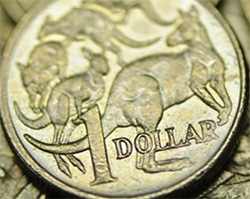
Is it time for the Australian dollar to decline?
At Montgomery, we focus more of our attention on the economics of individual businesses, rather than the macro business environment. We do this because we believe it’s very hard to forecast macro variables with any reliability, and we know that the best companies can do well even in a difficult environment.
Having said that, from time to time there are thematic views that inform our investment decisions. One of these has been our view that the very high A$ exchange rates we have seen for the last few years seem unlikely to be sustainable long-term. You can watch our April 30 video on the subject, preceding the most recent declines, here. Recently, this has put us at odds with fashion, as a number of commentators have expressed the view that high exchange rates are here to stay.
With the A$ having now dropped back to parity with the US$, this may be a good time for investors to give some additional thought to the question. Some factors that might be taken into account include:
– The US has been showing tentative signs of economic recovery for some time now. While the growth may not be vigorous, the signs have certainly been positive;
– More recently, reports from European companies have started to improve. The proverbial “green shoots” appear to be emerging in various places;
– Equity markets appear to be anticipating better economic conditions – interestingly the German DAX recently hit record levels;
These points are relevant, because a high A$ exchange rate reflects weakness on the part of other currencies and economies, as much as “strength” in Australia. As to Australia’s position, cuts to interest rates and the decline of international capital flowing into resources projects lead us to think that demand for the A$ may be more subdued going forward.
Taking all this into account, now might be a good time to consider the impact a material decline in exchange rates could have for the companies in your portfolio.

Kelvin Ng
:
Hi Roger, have a look at David Tepper’s (Appaloosa Management) interview on CNBC last night – he reckons the Fed may be forced to taper QE, with predictable consequences for US bond yields.
Kind regards,
Kelvin
James Kennedy
:
Is it time for it to fall? I have no idea about the precise timing – the George Soros’s and Stanley Druckenmiller’s of this world can figure that one out – but the AUD should be significantly lower (>15%) in five-six years’ time. A big swing could come early within that period, but it is difficult to say exactly when. Though many global speculators appear to be lining up to kickstart it soon…(good luck to them).
There is significant downside potential to the AUD/USD and it’s very very difficult to see an upside. I think we can be fairly confident in a move of 10-15% down over a couple of years; that would take the edge off the PPP disparity. Beyond that though, who knows what could happen.
Given that we don’t know when or how hard it will come down, anyone who has found a good, safe, cheap-looking US equities investment should stop sucking their thumb now and go out and buy (if the price is still right!). I think this is far safer – assuming people have done their homework and they’re in it for the long term – than direct betting on the currency, or most of the Australian companies (tourism, mining, ag, etc) that benefit from an AUD fall.
Roger, I’m as eager as ever to hear your thoughts!
Roger Montgomery
:
Hi james,
…or you could have a look at Magellan’s Global Fund.
xiao fang xu
:
well all “green shoots” will last as long as interest rates are 0% and buying of all kind of bonds everywhere is 100 billion a months.
around 2000 ozie was $0,50 cent some long term average around $0,74 cent.
Kelvin Ng
:
Good morning Tim, in addition to the A$, we also have to think about US interest rates going up – Warren Buffet would not be issuing long term debt if he was not convinced that US interest rates have bottomed and will start to rise, probably over the next year or two.
Kind regards,
Kelvin
Roger Montgomery
:
Excellent points Kelvin.